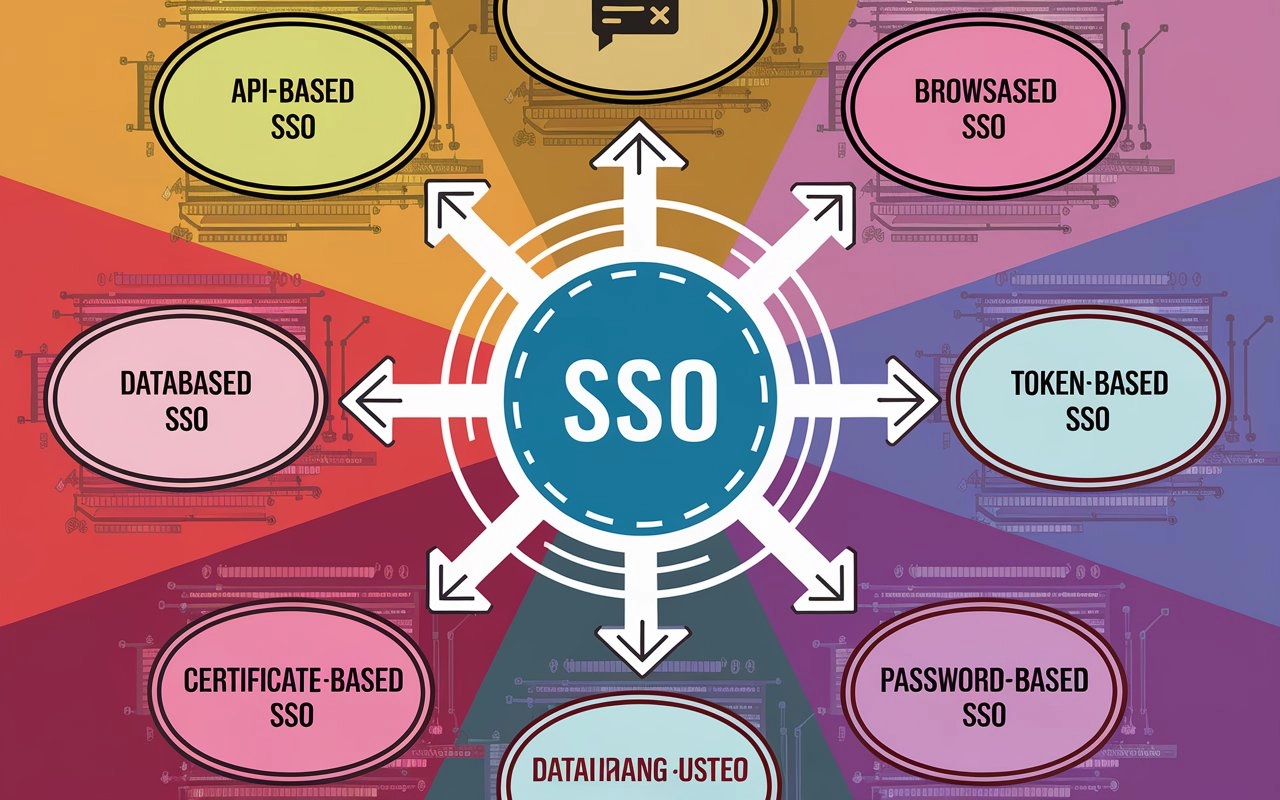Overview of various types and approaches to SSO implementation

Single sign-on or SSO (Single Sign-On) is a method that allows users to log in to multiple applications and systems simultaneously. This approach simplifies access control and improves convenience for end users. However, implementing SSO requires careful analysis and planning.
Types of SSO and their goals, approaches and implementation algorithm
Depending on the type of single sign-on implementation, the final goals of using this technology also differ:
- Based on cookies and sessions. Allows you to maintain a single user session when using different services. Used in web applications where maintaining a session is important. In this type of SSO, cookies are created and stored in the browser after successful user authentication. With each subsequent request to different applications on the same domain, cookies are used to verify the user's authenticity. Advantages of using cookies and sessions: ease of implementation and use for web applications. Disadvantages: limited use only for web applications and possible security issues.
- Based on tokens (JWT, OAuth). Provides secure transfer of authentication data between services. Used in mobile and web applications with a high degree of security. Tokens are created only as a result of successful identification and are transported between the client and server for authentication. JWT (JSON Web Tokens) are often used in conjunction with OAuth to create secure tokens. Advantages: high level of security and flexibility of use. Disadvantages: complexity of implementation and the need for reliable storage and transportation of tokens.
- SAML (Security Assertion Markup Language). Provides a tool for exchanging identification and authorization information of clients between services. It is used in enterprise applications and services that require reliable integration. SAML is a protocol that is used to transfer authentication and authorization data between two participants: an identity provider and a service provider. Data is transferred in the form of XML documents. Advantages: reliable integration and security. Disadvantages: relative complexity of setup and need to support the SAML standard by all participating systems.
SSO implementation approaches and algorithm
Single sign-on can be implemented centrally or decentralized:
- Centralized authentication. All authentication requests are processed by one central server. The advantage of this approach is a single point of management and monitoring. It is easier to manage access and security policies. The main disadvantage: a possible bottleneck in a larger system. In the event of a central server failure, the entire SSO system will be unavailable. It is used for corporate systems that use one server for all authentications, such as Microsoft Active Directory.
- Decentralized authentication. Each application independently authenticates users, but uses common tokens or certificates. Pros: Increased resilience to failures. Each application can continue to operate independently of the others. Cons: Complexity of key and certificate management. Higher probability of configuration errors and incompatibilities. Used in microservice architecture, where each application has its own authentication system, but uses common token issuance mechanisms.
The SSO implementation path should have the following fundamental provisions:
- Assess the needs and risks. Audit your current systems and determine which of them can be integrated into SSO. Assess the risks and develop a strategy for mitigating them. A clear understanding of your goals and risks allows you to avoid unexpected problems. Interviewing users and administrators, analyzing the current security architecture will help to effectively implement this initial stage.
- Choosing the right technology. Based on the specifics of your applications and security requirements, select the right SSO technology. Compare different solutions based on their capabilities, cost, and implementation complexity. The optimal choice of technology ensures better integration and minimizes risks. To do this, conduct pilot tests, consult with security experts.
- Testing and piloting. Launch a pilot project to identify potential issues and evaluate the effectiveness of the selected solution. Provide testing on various platforms and with different users. Identifying and fixing problems at an early stage reduces the risk of unsuccessful implementation. To do this, create test scenarios, conduct load tests.
- User training and support. Provide the necessary training for end users and technical staff. Develop documentation and training materials. To successfully implement this stage, conduct trainings, create video instructions and reference materials.
- Monitoring and management. Regularly monitor the operation of the SSO system and update it in accordance with new threats and requirements. Implement monitoring and reporting tools to analyze the system's operation. To do this, use SIEM (Security Information and Event Management) systems, regular security checks and audits.
Private VPN server and SSO
A private VPN server is an important element of the architecture when using SSO, providing an additional layer of security. VPN protects data transmitted between the user and the SSO server, preventing possible attacks and data interception. Integrating a private VPN server with SSO allows enterprises to increase the protection of their authentication processes, providing more secure access to corporate resources.
On Private VPN server, you can buy a private VPN server and get comprehensive information about various VPN services. When making a decision, it is important to consider your safety and privacy, which are a priority today.